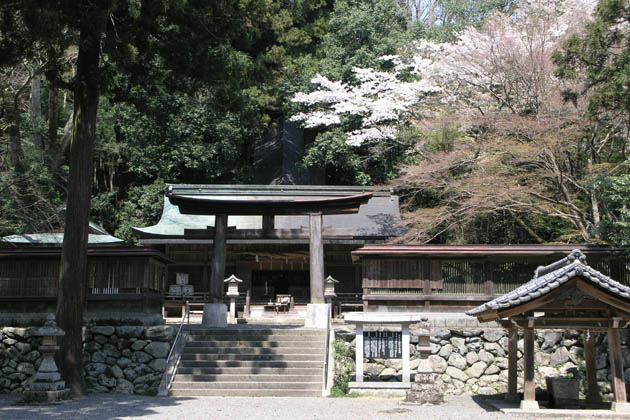
I stopped at Katsuragi in the way back from Tenkawa. Katsuragi is the name of a mountain and also the name of a village at the foot of the mountain. There are some old shrines. I believe that some of them were built in the early Yayoi era, three thousand years ago!
According to ancient myths, in each mountain there lives kami, the Divine, with ara-mitama, the rough spirit. When the Yayoi people came to this country, they located their village in the place where a stream flowed out of the mountain. On the alluvial cone, they made terraced paddy fields. On the top of the fields, they settled a shrine of the Divine. There a priest worshipped the Divine to change her spirit into nigi-mitama, the fine spirit. The Divine with the fine spirit was believed to provide water with the fine spirit that protected rice from diseases. The Divine of the Yayoi people was primarily the goddess of the harvest.
People did not go into the mountain, because there lived the Divine with the rough spirit who might damage human beings by her rage. Some people, who worked in the forest, as woodcutters and hunters, however, must have entered into the mountain. It was necessary to sanctify themselves by special kinds of rituals to protect themselves from the furious Divine. They used a fire as a symbol of the Divine, while the village shrines used a mirror. The religion of the village became Shintoism, and one of the mountains became Shugendô.

I suspect that Shugendô was a religion of the Jômon people. They did not know agriculture and lived on the hunting and gathering. After the Yayoi people came to this country, they learned agriculture, but still they went into the mountain. The Jômon people and the Yayoi people coexisted together and cooperated with each other. I am very proud that the Yayoi people were not cruel conquerors who tried to annihilate the natives.
From Katsuragi Village, which is located on an alluvial cone, Asuka, the oldest capital of Japan, can be seen with a sweep of the eye. The Imperial Family is thought to come to Japan in the late Yayoi period, perhaps 2,000 to 2,500 years ago, with the irrigation technology, which enabled them to cultivate the level farmland. The first emperor is said to be crowned at Asuka at February 11, 2660, B.C.E. I do not believe in this date, but, anyway, it was long ago.
According to a myth, there was a kingdom of the Katsuragi Tribe before the Imperial Family came to this land, and the both families made a contract to cooperate with each other. It seems to me that the myth reflects a historical fact to some extent. Katsuragi is located at the source of the water of Asuka. Without the worship by a priest from the Katsuragi Tribe, the Imperial Family could not get the water with the fine spirit. Actually in Kyoto, there are two shrines of the Katsuragi Tribe. They are called the upper Kamo Shrine and the lower Kamo Shrine. The upper one is located at the place where the river flows out of the mountain, and the lower one is where the river enters into the city. The river is named the Kamo River. Kamo is the family name of the priest of the Katsuragi Tribe. The Imperial Family took priests from the Katsuragi to Kyoto. Here again I am very glad to recognize that our ancestors knew how to cooperate.

